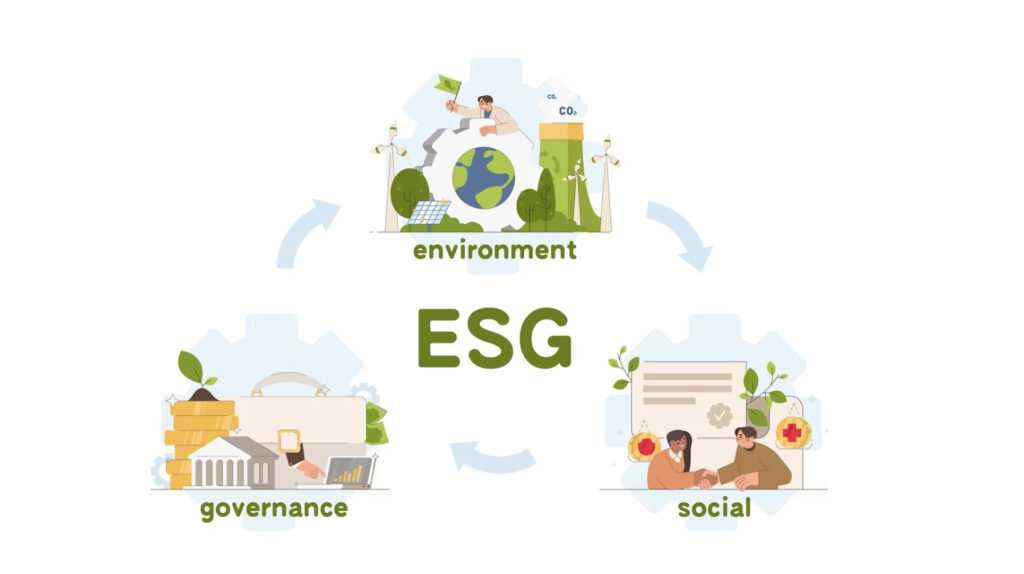
Sustainable funding is a financial strategy that promotes social responsibility, environmental sustainability, and corporate governance. Incorporating environmental, social, and governance (ESG) metrics in your startup’s financial strategy can help you achieve sustainable funding. This article provides startups with a comprehensive guide on how to incorporate ESG metrics in financial strategy for sustainable funding.
Understanding ESG Metrics
ESG metrics are criteria used to evaluate a company’s performance on environmental, social, and governance issues. They provide a framework for assessing a company’s impact on the environment, society, and its stakeholders.
Incorporating ESG metrics into a startup’s financial strategy is becoming essential for achieving sustainable funding. Some of the reasons why ESG metrics are important for sustainable funding include:
- Meeting the expectations of socially responsible investors who prioritize ESG performance when making investment decisions
- Identifying areas for improvement in environmental, social, and governance issues
- Improving the company’s reputation and brand value
- Reducing risk and increasing long-term profitability
Incorporating ESG Metrics in Your Financial Reporting
Steps for incorporating ESG metrics in financial reporting
- To effectively incorporate ESG metrics in financial reporting, startups can follow these steps:
a. Identify relevant ESG metrics based on your industry and company size: Startups need to identify ESG metrics that are relevant to their industry and company size. This will help them focus on metrics that are most impactful and relevant to their business.
b. Collect data on the identified metrics and establish a reporting process: Once startups have identified the relevant ESG metrics, they need to collect data on those metrics and establish a reporting process. Startups should use data management tools to collect and organize data, and establish a process for tracking and reporting the metrics.
c. Include ESG metrics in your financial reporting, such as annual reports or sustainability reports: After collecting data, startups should include ESG metrics in their financial reporting. Startups can include these metrics in their annual reports or sustainability reports.
d. Ensure accuracy and transparency in the reporting process: Startups need to ensure accuracy and transparency in the reporting process to avoid errors and misinformation. Startups should review and verify the data before including it in the financial reporting.
Benefits of incorporating ESG metrics in financial reporting
Incorporating ESG metrics in financial reporting can provide several benefits to startups. These include:
Increased transparency and accountability: Incorporating ESG metrics in financial reporting increases transparency and accountability by providing stakeholders with information on the company’s social, environmental, and governance performance.
Improved stakeholder relations: Reporting on ESG metrics helps startups build better relationships with stakeholders, including investors, customers, and employees. It shows that the startup is committed to social responsibility and sustainability.
Enhanced reputation and brand value: Reporting on ESG metrics can help enhance the startup’s reputation and brand value. It demonstrates the startup’s commitment to social responsibility, environmental sustainability, and corporate governance.
Improved risk management and long-term profitability: Incorporating ESG metrics in financial reporting can help startups identify and manage risks, leading to improved long-term profitability.
Best practices for incorporating ESG metrics in financial reporting
To ensure effective incorporation of ESG metrics in financial reporting, startups should consider the following best practices:
Involve key stakeholders in the process, such as employees, investors, and customers: Startups should involve key stakeholders in the process to ensure that the reporting is relevant and useful to them.
Use standardized reporting frameworks, such as the Global Reporting Initiative (GRI) or Sustainability Accounting Standards Board (SASB): Startups can use standardized reporting frameworks to ensure consistency and comparability in the reporting of ESG metrics.
Provide context and explanations for the reported metrics to enhance understanding: Startups should provide context and explanations for the reported metrics to enhance stakeholders’ understanding of the startup’s ESG performance.
Regularly review and update the reporting process and metrics to reflect changes in the business or industry: Startups should regularly review and update the reporting process and metrics to ensure that they remain relevant and useful to stakeholders.
Examples of ESG metrics
ESG metrics can be divided into environmental, social, and governance. Some examples of ESG metrics include:
- Environmental Metrics: greenhouse gas emissions, water usage and waste management, energy consumption and renewable energy use, and biodiversity conservation
- Social Metrics: labor practices and employee engagement, diversity and inclusion in the workforce, community engagement and impact, and human rights and supply chain management
- Governance Metrics: board diversity and independence, executive compensation and transparency, ethics and anti-corruption policies, and shareholder rights and engagement.
Conclusion
Incorporating ESG metrics in your financial strategy can help you achieve sustainable funding and promote social responsibility, environmental sustainability, and corporate governance. By following the steps outlined in this article and implementing best practices for financial reporting and investor relations, startups can successfully incorporate environmental, social, and governance metrics into their financial strategy and achieve sustainable funding for the long term.